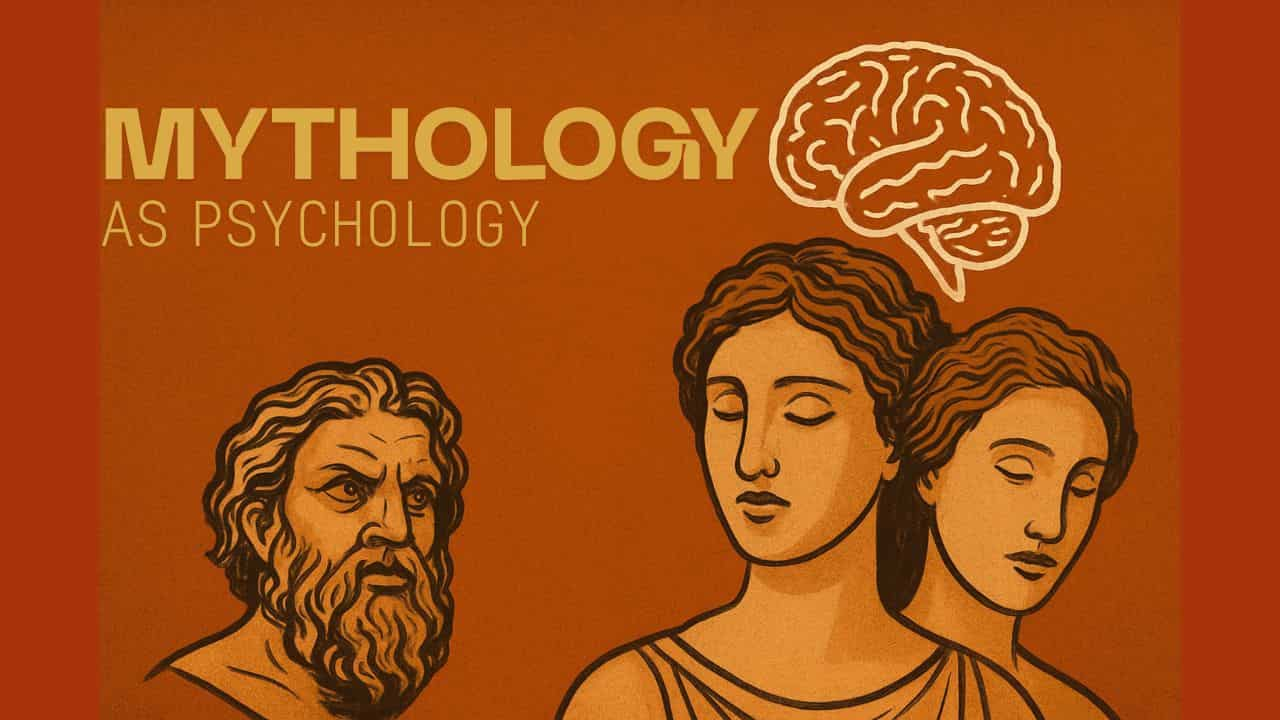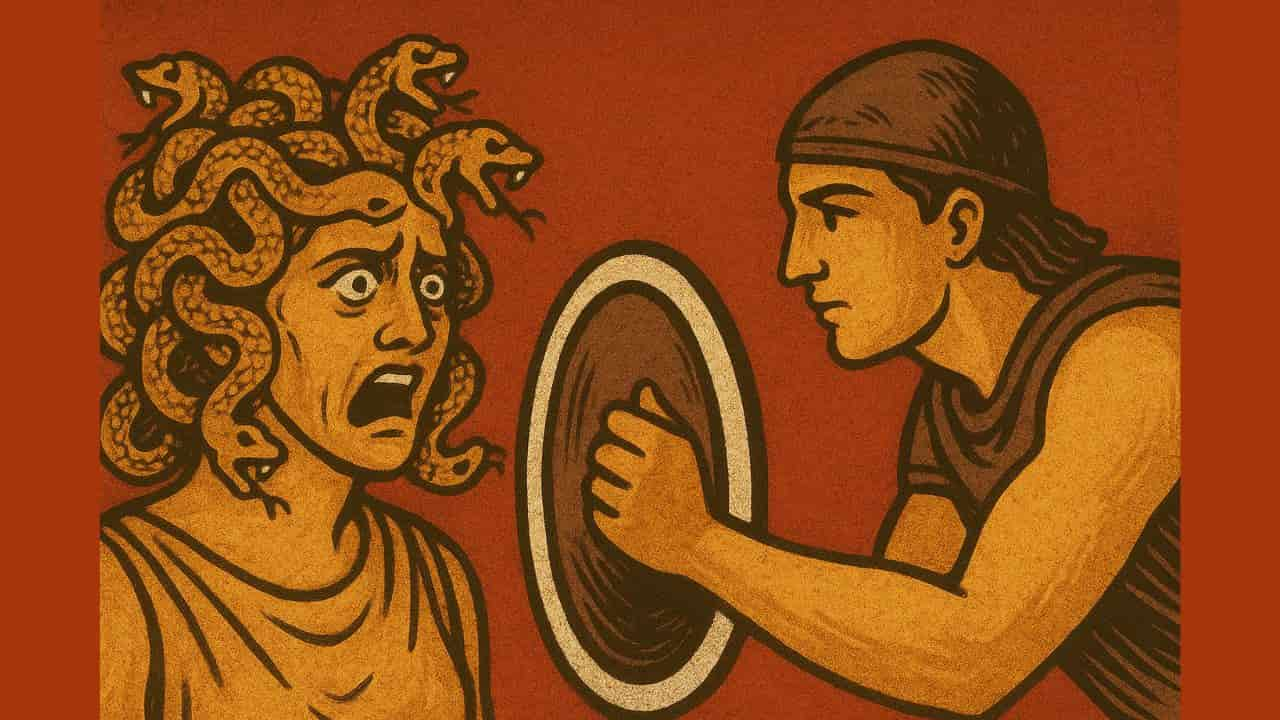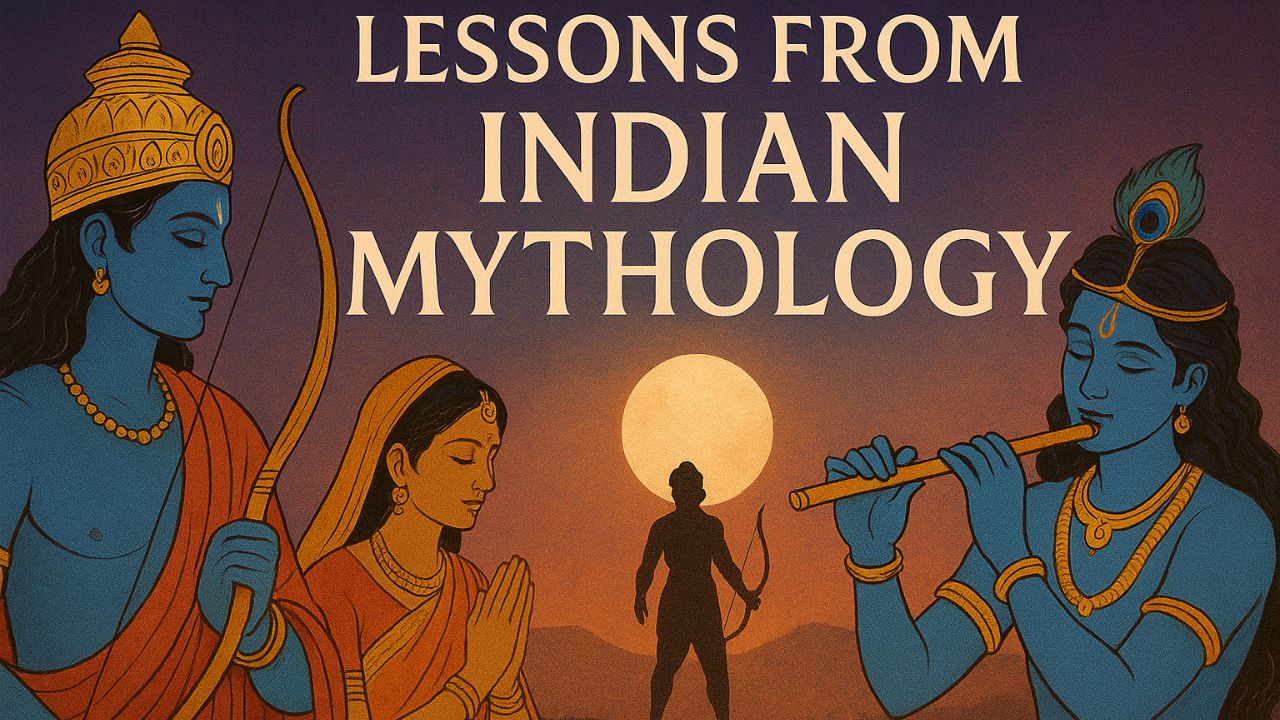
Mythology as Psychology: Myths as Mirrors of the Mind
Across cultures and centuries, myths have been humanity’s first psychology. Long before therapy rooms or scientific studies, people told stories to explain the mysteries of fear, love, courage, despair, and transformation.
Whether in the Indian epics, the Greek tragedies, the Norse sagas, or Japanese folktales, myths reveal not only the actions of gods and heroes but also the hidden landscapes of human emotion.
When we read myths today, we are not only learning about ancient civilizations but also holding up a mirror to our own minds. Mythology as psychology is helping us recognize patterns, face fears, and find meaning in change.
1. Fear in Myth: Shadows and Monsters

One of the most universal emotions expressed through mythology is fear. Every culture has created terrifying beings that embody what people dread most.
- In Greek mythology, the Gorgon Medusa represents fear of death and the unknown. Her petrifying gaze paralyzes, just as fear often freezes us in real life. Perseus’s act of slaying Medusa becomes a metaphor for courage, not the absence of fear, but the ability to confront and master it.
- Similarly, in Indian mythology, demons like Mahishasura or Ravana symbolize chaos, arrogance, and the darker impulses of the mind. When the goddess Durga slays Mahishasura, or when Rama defeats Ravana, it is not only a story of good triumphing over evil but of inner battles where fear and ego must be subdued.
- In Japanese folklore, yokai (spirits and monsters) often embody anxieties about nature, death, and the unseen world. From river demons to vengeful ghosts, these beings externalize hidden fears, making them easier to name and navigate.
Myth teaches us that by giving fear a face, we give ourselves the courage to overcome it.
2. Courage and Heroism: Facing the Impossible
Another universal theme of mythology is courage, not reckless bravery, but the strength to face overwhelming odds.
- The Greek hero Heracles (Hercules) embodies this in his twelve labors, each symbolizing a test of endurance and determination. His struggles reveal that true courage is not a single victory, but a lifelong series of challenges.
- In the Mahabharata, Arjuna faces a moral crisis on the battlefield. His courage comes not from blind violence, but from clarity, as he understands his duty with the guidance of Krishna in the Bhagavad Gita. This illustrates that courage is as much about inner conviction as outer strength.
- Norse mythology offers perhaps the most striking image of courage in the face of doom. The gods know that Ragnarok, the final battle, will bring their destruction. Yet they choose to fight anyway. Their courage lies not in victory but in defiance, in meeting fate with dignity.
These tales resonate with anyone who has faced hardship. Courage in mythology is not about avoiding fear but about standing firm even when defeat seems certain.
3. Transformation: Death, Rebirth, and Renewal
If myths have one recurring theme, it is transformation. Humans have always sought meaning in cycles of death and renewal, seeing in them the possibility of personal growth.
- In Greek myth, Persephone’s abduction into the underworld explains the seasons, winter as her absence, spring as her return. The story mirrors the cycles of grief and healing, reminding us that absence is not permanent and that renewal always follows loss.
- In Indian mythology, Shiva embodies transformation itself. As the destroyer, he clears the old to make way for the new. His dance of creation and destruction is a reminder that change is inevitable, and that destruction is often the seed of rebirth.
- Japanese Shinto myths emphasize purification and renewal. The sun goddess Amaterasu hides in a cave after being insulted, plunging the world into darkness. Only through ritual and reconciliation does she emerge, bringing light back to the world. This tale reflects how personal healing requires both inner retreat and eventual return.
Transformation in myth teaches us resilience, that endings can be beginnings, and that identity itself is shaped by change.
4. Archetypes: Universal Patterns of Emotion
Modern psychology has recognized in myths what ancient people always intuited: recurring archetypes.
Thinkers like Carl Jung argued that myths express the collective unconscious, shared human patterns across cultures.
The Hero represents courage and growth.
The Trickster embodies chaos and humor, teaching us humility. The Mother nurtures, while the Shadow represents the darker parts of ourselves we often deny.
When we read of Loki in Norse tales or Krishna’s playful pranks, we see the Trickster archetype teaching flexibility. When we read of Demeter grieving for Persephone, we encounter the archetype of the Mother, embodying love and loss.
This aspect of mythology as psychology reminds us that emotions are universal, even if cultures tell their stories differently.
5. Myths as Therapy: Healing Through Story
In many ways, myths served as ancient therapy. Telling stories of gods and heroes helped communities process grief, fear, or joy.
A farmer might see his struggles reflected in the trials of Heracles, while a grieving mother might find solace in Demeter’s sorrow.
Even today, psychologists use myths in therapy to help people reframe their struggles.
The Hero’s Journey, described by Joseph Campbell, is often used to help individuals see their challenges as part of a larger story of growth. Myths provide a framework for meaning, showing that pain, loss, or fear are not endpoints but steps in transformation.
Mythology as Psychology: Lessons for the Modern World
In our age of technology and science, myths may seem like relics. Yet their psychological wisdom is more relevant than ever. Anxiety, loneliness, and the search for meaning remain as human as they were thousands of years ago.
Myths remind us that fear can be faced, that love is sacred but fragile, that courage is a choice, and that change is the law of life. They encourage us to see our struggles not as random suffering but as part of a shared human story.
Reading myths across cultures also fosters empathy. We see that whether Greek, Indian, Norse, or Japanese, humans have always wrestled with the same emotions.
Mythology as psychology thus becomes a bridge, connecting cultures and generations through shared truths of the heart.
Mythology as Psychology: Relevance Across Cultures
What is striking is how different cultures echo one another.
- The Egyptian Osiris, the Greek Dionysus, and the Indian Shiva all represent death and rebirth.
- The Norse Ragnarok and the Indian pralaya both describe cosmic destruction followed by renewal.
- Japanese yokai and Greek monsters both give form to hidden fears.
These resonances show that while myths may wear different costumes, their core messages remain universal. Human emotions transcend borders, and myths are their timeless language.
Mythology as Psychology: The Eternal Language of Emotion
Mythology is more than entertainment or superstition. It is psychology written in the language of gods and heroes. Through fearsome monsters, tender love stories, heroic quests, and cycles of transformation, myths map the inner world of human emotion.
They remind us that to be human is to struggle, to love, to fear, and to change. By listening to these ancient stories, we rediscover our own resilience and find guidance for modern challenges. Mythology as psychology endure because emotions endure, and as long as humans feel, the stories will live.

